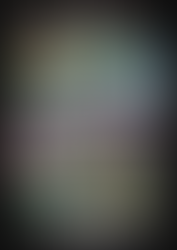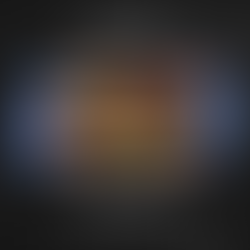Defrag Exhibtion 2022 - 3rd Year Art and Design Show
- Kimberly Roberts
- Mar 22, 2022
- 4 min read
The Defrag Exhibition brief is a live brief in conjunction with university coursework. It involves working with my friends Liv, Jess, Elle, Emma, and the art and design department. This project was to develop the brand guidelines and final products (catalogue, promotional material etc.) for the upcoming 3rd-year art and design degree show. This is an exciting opportunity as we had complete control in designing the degree to show how we would want it to be. However, the project caused a lot of pressure and stress because we wanted to produce high-quality work with a meaningful narrative behind the show.
We were able to get this brief because Jeremy proposed the idea just before Christmas break opened to all third-year graphic design students to develop the branding for the show. I was the first to inquire about this because it felt like an opportunity that doesn't often happen, especially as a university student. I wanted to bite the bullet and use this brief to learn new skills and gain experience to showcase this project within my portfolio after university. Since this was such a huge project, Jeremey told me to form a design team together. I thought my friend group in class would be the best people to ask as I believed they would be interested in working on this whilst trusting them to complete the tasks (not to mention they are fantastic designers, in my humble opinion).
I plan to talk more about this project within my interface with the broader world section and the meaning behind the project to avoid repeating myself. The reason why I want to include that within that part of the website is that it is probably one of the most monumental projects that I am working on at the moment (minus the exhibition piece that is to come), so it only felt right to include it there as well. I wanted this blog post to be more about my own work, especially how I felt about tackling this part of the project.
We all had our own roles within the group project, and mine was to tackle the more illustrative side of the brand guidelines. This was because I was able to illustrations quickly whilst maintaining the quality and the person that was more interested in that aspect of the brand guidelines. This allowed me to work on the poster designs and most of the catalogue cover. I say most of the catalogue cover because my original TV design for the cover was replaced with Elle's design to have consistency throughout the exhibition's branding. Not to mention, I felt my TV design was to a lower standard because it looked wobbly/squished, and the use of the brown colours went against the established theme and made it look out of place.
On the other hand, my poster designs were my most concrete solutions for the brief, as I created four different posters (with the help of Elle's TV design on two). My favourite designs were where I entirely designed the posters because I took my time creating the illustrations and learning from my mistake with the catalogue cover. I really wanted to refine my TV drawing skills, which I achieved through these poster designs.
I think the design of the single TV is my favourite because even though it is busy, it's not overbearing in any way. There's a correct amount of balance in the composition, and it gets the message across equally as the other posters. I also subtly included my original design for the stacked TVs within this poster design to fill the space more and avoid wasting unused work. Although I am constantly changing my mind about which one I like more because each day I look at them, my mind changes when writing this blog. I like the stacked TVs more because it shows more consistency within our design choices and link better with our catalogue cover with the pixel overlay of the white and grey blocks. Overall, I feel these are some of the best poster designs I have created, and I can only hope that Jeremy and the people seeing the show think so.
Another aspect of the exhibition that I worked on slightly was the typography, as I was the one that altered our original typeface, making it appear more glitchy and fit the theme of the degree show more. Although it is simple, it is effective as we didn't want to overcomplicate the "logo identity" for the exhibition as we plan on using the TV motif throughout the promotional material, so we didn't like a logo that looked too clunky against the illustrative outcomes.


Finally, it was my idea to set up a social media platform about the Defrag exhibition to help generate buzz and excitement for the project. The rest of the team agreed that this was an excellent way to further promote the show. We all decided on using Instagram to help promote the account due to everyone being able to use Instagram effectively. Furthermore, I plan on updating this Instagram as much as I can, either before the 19th Mayor or shortly after, to help promote the exhibition more. I also created countdown templates that we could use when it gets closer to the show to cause more excitement for the audience.
Overall, despite this ongoing project, as we have to produce the final solutions ourselves, set up the exhibition, and promote Instagram, we still have to do a lot. But this part of the project was stressful but exciting at the same time as it is surreal still, after months of working on it, that we are actually designing the degree show. I just hope it works out for the final show and that the university and our classmates are happy with what we have done for the degree show as it is just as much their show as it is ours.
























Comments